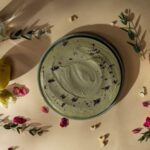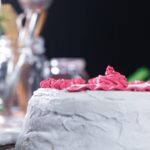Adding fresh flowers to cake decorations has become a popular trend due to the stunning visual effect it creates. The delicate beauty of flowers adds elegance and charm to any cake, making it not only a delicious treat but also a work of art. This article will provide a comprehensive guide on how to effectively decorate a cake with fresh flowers, covering everything from choosing the right flowers to safely attaching them to the cake.
Decorating cakes with fresh flowers is a wonderful way to add a touch of natural beauty and freshness to any celebration. Whether it’s a wedding, birthday, or special event, floral cake decorations are guaranteed to impress your guests and create an enchanting atmosphere. By carefully selecting and arranging the flowers, you can custom-create a design that suits your taste and complements the overall theme of the occasion.
In this article, we will explore different aspects of decorating cakes with fresh flowers. We will start by discussing the importance of using edible flowers to ensure food safety and provide you with a list of popular varieties that are commonly used for cake decoration.
Then, we will guide you through the process of cleaning and conditioning the flowers properly before adding them to your cake design. Finally, we will share tips on planning the arrangement of the flowers on your cake and various techniques for securely attaching them.
By following these step-by-step instructions and incorporating some creative ideas, you can transform an ordinary cake into a masterpiece adorned with fresh blooms. Whether you are an experienced baker or new to cake decoration, this guide will equip you with all the necessary knowledge and skills to create dazzling floral cake designs that will wow your family and friends. So let’s get started on this delightful journey of combining culinary artistry and nature’s beauty.
Choosing the right flowers for cake decoration
Choosing the right flowers for cake decoration is a crucial step in creating a visually appealing and safe cake design. When it comes to decorating cakes with fresh flowers, it is of utmost importance to ensure that the flowers used are edible and safe for consumption.
Not all flowers are suitable for cake decoration, as some varieties may contain toxic compounds or have been treated with pesticides. Therefore, it is essential to select edible flowers that will enhance the overall aesthetic of the cake while ensuring the safety of those who will consume it.
Importance of using edible flowers
Using edible flowers not only adds beauty and elegance to a cake but also provides an opportunity to infuse subtle flavors into the dessert. Edible flowers are grown specifically for culinary purposes and meet stringent safety standards. They are free from any harmful chemicals or toxins that could pose a risk to human health.
Popular varieties of edible flowers
There is a wide range of edible flowers available for cake decoration, each offering unique colors, shapes, and flavors. Some popular varieties include:
- Roses: With their delicate petals and romantic appeal, roses are frequently used in cake decoration. They come in various colors, such as red, pink, white, and yellow.
- Lavender: Known for its soothing aroma, lavender adds a touch of elegance and fragrance to cakes. The purple hues of its petals make it visually appealing as well.
- Marigolds: These vibrant orange or yellow blooms can be used whole or separated into individual petals. Marigolds have a mild citrusy flavor that pairs well with sweet treats.
- Pansies: Pansies come in an array of colors and have a slightly minty taste. They can be used as small accents or scattered across the entire cake for a whimsical look.
- Violets: Delicate violets offer shades ranging from purple to blue. They have a subtle floral flavor and are popular for both decoration and crystallization purposes.
When selecting edible flowers, always ensure they are fresh, pesticide-free, and sourced from reputable suppliers. It is recommended to consult with a professional florist or bakery to determine the best edible flowers for cake decoration and confirm their safety for consumption.
Preparing the flowers
Preparing the flowers for cake decoration is a crucial step to ensure that they are clean, safe to use, and will last throughout the event. Here is a step-by-step guide on properly cleaning and conditioning the flowers for your cake decoration:
- Choose edible flowers: It is important to select flowers that are safe for consumption and do not contain any toxic substances. Some popular edible flowers include roses, pansies, marigolds, violets, and lavender. Ensure that the flowers you choose are organically grown and have not been treated with chemicals or pesticides.
- Clean the flowers: Before using the flowers on the cake, gently rinse them under running water to remove any dirt or debris. Be careful not to damage the delicate petals or stems while cleaning.
- Remove unwanted parts: Carefully remove any sepals, stamens, pistils, or other non-edible parts of the flower. These parts can have a bitter taste or affect the overall appearance of your cake decoration.
- Condition the flowers: To keep your flowers fresh and hydrated for longer, it is necessary to condition them before placing them on the cake. Fill a container with clean water and place the cut ends of the flower stems in it. Allow them to soak for at least 30 minutes before transferring them to a floral foam pad or damp paper towel.
- Trim the stems: Trim the stems of each flower at an angle using sharp scissors or garden shears just before arranging them on your cake. This allows for better water absorption and ensures that they stay fresh.
- Let it dry: After trimming, leave the flowers in a cool place with good air circulation for about an hour so that excess moisture evaporates from their petals.
By following these steps, you can ensure that your flowers are clean, safe to eat, and properly conditioned for placement on your cake decoration. Taking these precautions will help maintain their freshness and beauty throughout the event.
Selecting the appropriate cake design
When decorating a cake with fresh flowers, it is essential to select the appropriate cake design that complements and enhances the floral decorations. The cake design sets the overall tone and theme for the entire presentation, so it is crucial to consider the aesthetic appeal and vibe you want to achieve. Here are some different cake styles that work well with floral decorations, along with tips on considering the overall theme of your event:
- Classic and Elegant: A classic tiered cake with clean lines and smooth fondant icing creates a timeless look that pairs beautifully with delicate flowers such as roses or peonies. This design is perfect for weddings or formal occasions.
- Rustic and Natural: For a more rustic or bohemian theme, opt for naked or semi-naked cakes that feature minimal frosting on the outside. These cakes create a natural and organic backdrop for vibrant wildflowers or herbs like lavender or rosemary.
- Whimsical and Fun: If you’re hosting a playful event like a birthday party or baby shower, consider whimsical cake designs such as ombre layers, watercolor finishes, or even novelty-shaped cakes like unicorns or rainbows. These designs allow for more creativity in incorporating bright and colorful flowers like daisies or sunflowers.
When choosing a cake design, it’s important to also consider the overall theme of your event. Take into account the colors, style, and ambiance you want to achieve. For example, if you’re planning a spring garden party, incorporating pastel hues and floral patterns on your cake can tie in perfectly with the theme.
Remember to consult with your baker or cake decorator as they can provide expert guidance on which cake styles will best complement your chosen flowers and overall theme. Their experience can help ensure a cohesive look between the floral decorations and the cake design.
By carefully selecting an appropriate cake design that complements your floral decorations and aligns with your event’s theme, you can create a visually stunning centerpiece that will be the highlight of any celebration.
Creating a floral arrangement plan
When it comes to decorating a cake with fresh flowers, creating a well-thought-out floral arrangement plan is crucial for achieving an aesthetically pleasing result. Planning the placement and arrangement of the flowers beforehand helps ensure that they complement the overall design of the cake and create a harmonious visual impact. Here are some tips and tricks to help you create an effective floral arrangement plan for your cake decoration:
- Consider the size and shape of the cake: Before starting your floral arrangement plan, assess the size and shape of your cake. A taller cake may require more cascading flower arrangements, while a smaller cake might benefit from minimalistic flower accents. Take into account the dimensions and proportions of your cake to find a balance between the size of the flowers and the overall presentation.
- Choose a focal point: Selecting a focal point for your floral arrangement can give your cake decoration a cohesive look. It could be a single large bloom or a cluster of blooms in one area of the cake. By placing emphasis on one area, you can draw attention to specific details and create visual interest.
- Mix different flower sizes, colors, and textures: Mixing various flower sizes, colors, and textures adds depth and dimension to your floral arrangement. Consider incorporating both large statement blooms as well as smaller filler flowers to create contrast and balance. Additionally, experiment with different textures such as fluffy petals, delicate blossoms, or structured blooms to add visual interest.
- Use greenery wisely: Greenery such as leaves or sprigs can enhance the overall floral design by providing additional color variations or creating contrast against bright colored blooms. Incorporate greenery strategically throughout your arrangement to fill gaps between flowers or add volume if needed.
| Popular Flower Varieties for Cake Decoration: |
|---|
| Roses |
| Lavender |
| Violets |
| Pansies |
| Marigolds |
| Nasturtiums |
Creating a floral arrangement plan not only helps in creating a visually appealing cake but also ensures that the flowers are strategically placed to avoid contact with any non-edible surfaces or frosting. It allows you to experiment with different placements and combinations before committing to a final design, saving you time and potential wastage of precious flowers.
Remember to always have a clear vision of how you want your cake to look and use this plan as a guide throughout the decoration process.
By investing time in planning the placement and arrangement of the flowers on your cake, you can achieve a truly stunning cake decoration that will impress guests at any celebration.
Safely attaching the flowers to the cake
When it comes to decorating a cake with fresh flowers, it is crucial to ensure that the flowers are securely attached to prevent any mishaps or contamination. There are several techniques you can use to safely attach the flowers to your cake, depending on your preference and the type of flowers you are using. Here are some popular methods:
- Toothpicks: One of the simplest ways to attach flowers to a cake is by using toothpicks. Start by inserting a toothpick into the stem of each flower, making sure it goes all the way through without poking out too much on either end. Then gently push the toothpick into the cake at your desired location. The toothpick will provide stability and keep the flower in place.
- Floral spikes: Floral spikes are widely used in professional cake decorating as they provide a secure base for attaching flowers without compromising their freshness. To use floral spikes, soak them in water for about 15 minutes before inserting them into the stems of your flowers. Then insert the spike into the cake at an angle and arrange your flowers around it.
- Edible glue: If you prefer not to have any visible attachments on your cake, edible glue is an excellent option. Edible glue can be made by mixing together water and either tylose powder or gum tragacanth until it forms a thick paste-like consistency. Apply a small amount of edible glue onto the backside of each flower before gently pressing it onto the cake.
To ensure maximum safety and maintain hygiene standards, it’s important to select edible organic flowers that haven’t been treated with pesticides or chemicals. Additionally, always check with your guests about any potential allergies before using fresh flowers as decorations.
| Technique | Description |
|---|---|
| Toothpicks | Simple and easy; insert a toothpick into the stem of each flower and gently push it into the cake |
| Floral spikes | Professional choice; soak floral spikes in water, insert them into flower stems, and then insert the spikes into the cake at an angle |
| Edible glue | No visible attachments; apply homemade edible glue to the backside of flowers and press them onto the cake |
Using these techniques, you can confidently attach your chosen flowers to your cake, ensuring they stay in place throughout your event. Remember to handle the flowers with care and avoid overcrowding the cake with too many blooms. With proper attachment and placement, you’ll create a stunning floral masterpiece that will leave everyone in awe.
Enhancing the floral cake design
When it comes to decorating a cake with fresh flowers, incorporating additional elements can truly elevate the overall aesthetic and create a stunning design. Adding foliage, herbs, or fruits to your floral cake design not only enhances its appearance but also adds depth, texture, and color. Here are some creative ideas and tips for enhancing the floral cake design:
Foliage
Adding foliage to your floral cake design can bring a touch of nature and freshness. Choose leaves that complement the flowers you’re using in terms of color and size. Popular options include eucalyptus leaves, fern fronds, or even small branches with delicate leaves. Place the foliage strategically around the flowers to create a balanced and visually appealing arrangement.
Herbs
Herbs are not only visually appealing but also add a unique flavor profile to your cake. Consider using fresh herbs like mint leaves, rosemary sprigs, or lavender stems to accentuate the flavors of the cake itself. Use them sparingly as accents or create small herb bouquets to place between larger flower arrangements.
Fruits
Incorporating fresh fruits into your floral cake design brings vibrant colors and an element of surprise. Choose fruits that are small in size and can be easily placed on top of the cake or nestled among the flowers. Popular choices include berries like raspberries or blueberries, sliced citrus fruits like lemons or oranges, or even small grapes.
Edible elements
Consider incorporating other edible elements such as sugared petals, edible gold leaf, or candied flowers to further enhance the visual appeal of your floral cake design. These elements not only add sparkle and shimmer but also add an extra layer of taste and texture.
Remember to always properly clean any additional elements you plan to use on your floral cake design and ensure they are food-safe. Also, be mindful of any potential allergies your guests or recipients may have when deciding on the additional elements to include.
By incorporating foliage, herbs, fruits, and other edible elements into your floral cake design, you can create a truly unique and visually stunning centerpiece for any occasion. Experiment with combining different textures and colors to enhance the overall aesthetic and make your floral cake design truly memorable.
Additional decoration ideas and tips
When it comes to decorating a cake with fresh flowers, there are endless possibilities for adding extra flair and charm. In addition to the natural beauty of the flowers themselves, incorporating other decorative elements can elevate the overall design and create a show-stopping centerpiece for any celebration.
One popular idea is adding ribbons to complement the floral arrangement. Ribbons can be used in various ways, such as wrapping them around the tiers of the cake or creating bows and cascading ribbons down the sides. The choice of ribbon color and texture should be coordinated with the color scheme and style of the flowers. Satin ribbons add an elegant touch, while burlap or twine can give a more rustic or bohemian feel.
Edible glitter is another option that can add a touch of sparkle and glamour to your floral cake design. Dusting the petals of the flowers with edible glitter can make them shimmer under the light, creating a magical effect. Alternatively, you can sprinkle edible glitter over the entire surface of the cake for an ethereal look. Just be sure to use food-grade edible glitter that is safe for consumption.
For those looking for a more decadent touch, consider incorporating chocolate ganache drips into your floral cake design. This technique involves pouring melted chocolate ganache over the edges of the cake layers, allowing it to drip down in an artistic manner. The contrast between rich chocolate and delicate blooms can create a visually striking combination. You can also experiment with different flavors of ganache, such as white chocolate or flavored ganaches like raspberry or salted caramel.
By incorporating additional decorative elements such as ribbons, edible glitter, or chocolate ganache drips, you can take your floral cake design to new heights of creativity and visual impact. These elements provide opportunities for personalization and customization to match any theme or occasion. Remember to have fun with it and let your imagination run wild.
Tips for preserving the freshness of the flowers on the cake
Preserving the freshness of the flowers on a cake is crucial to ensure that they remain vibrant and beautiful throughout the event. Here are some tips to help you maintain the freshness of your floral cake decoration:
- Choose fresh and resilient flowers: Start by selecting flowers that are known for their longevity and ability to withstand a few hours without water. Some popular choices include roses, daisies, marigolds, pansies, and violets. Avoid using delicate or wilting flowers as they may not hold up well.
- Clean and condition the flowers properly: Before placing them on the cake, make sure to clean the flowers thoroughly to remove any dirt or chemicals. Trim their stems at an angle and immediately place them in water to hydrate for a few hours before use. This step helps prolong their freshness and prevents wilting.
- Use flower spikes or toothpicks: To attach the flowers securely to the cake, consider using food-safe flower spikes or toothpicks. Insert them into the stems of each flower before gently pushing them into the cake at an angle. This method ensures stability while minimizing damage to the flowers.
- Avoid direct contact with icing: Direct contact with buttercream or fondant icing can cause flowers to wilt or transfer their color onto the cake. To prevent this, place a small piece of parchment paper or edible film between each flower and the icing surface.
- Keep away from moisture sources: Moisture can affect both your frosting and your floral decorations adversely. It’s important to avoid placing flowers near humidifiers, refrigerators, steamy kitchens, or any other sources of moisture that could cause them to wilt prematurely.
- Store in a cool location: Before displaying your floral cake creation, store it in a cool space away from direct sunlight or heat sources such as ovens or stovetops. This will help preserve both the freshness of your flowers as well as the integrity of your frosting.
By following these tips, you can ensure that the flowers on your cake remain fresh and vibrant throughout the event, adding a visually appealing element to your celebration. However, it is essential to remember that not all flowers are safe to eat, even if they are used purely for decorative purposes. Therefore, it is important to inform your guests about the non-edible nature of these floral decorations to prevent any accidents or health concerns during the event.
Conclusion
In conclusion, decorating a cake with fresh flowers can be a beautiful and trendy way to elevate any celebration. By following the key steps and tips outlined in this article, you can successfully achieve a stunning floral cake design that will impress your guests.
First and foremost, it is important to choose the right flowers for cake decoration. Using edible flowers is crucial to ensure food safety. Popular varieties like roses, lavender, pansies, and violets are not only safe to consume but also add a delightful touch to your cake.
Preparing the flowers properly is another crucial step. Cleaning and conditioning the flowers ensures that they are free from dirt and any potential contaminants. This step also helps extend their freshness and longevity on the cake.
When selecting the appropriate cake design, consider both the style of the cake and the overall theme of your event. Different cake styles, such as naked cakes or buttercream cakes, can complement floral decorations in unique ways. By carefully planning the placement and arrangement of the flowers on your cake, you can create a visually appealing floral arrangement that enhances the overall aesthetic.
To securely attach the flowers to your cake, there are several techniques you can utilize. Toothpicks, floral spikes, or edible glue can all be used to ensure that the flowers stay firmly in place without compromising their edibility.
In addition to just using flowers, consider enhancing your floral cake design by incorporating other elements such as foliage, herbs, or even fruits. These additional touches can add depth and interest to your creation.
To further enhance your decorative efforts, explore additional ideas such as incorporating ribbons or adding edible glitter or chocolate ganache drips. These creative suggestions can take your floral cake design to another level.
Lastly, it is essential to ensure that the freshness of the flowers is preserved throughout your event. Methods such as refrigeration or misting can help keep the flowers vibrant until it is time for them to be enjoyed.

Welcome to my blog about home and family. This blog is a place where I will share my thoughts, ideas, and experiences related to these important topics. I am a stay-at-home mom with two young children. I hope you enjoy reading it! and may find some helpful tips and ideas that will make your home and family life even better!





